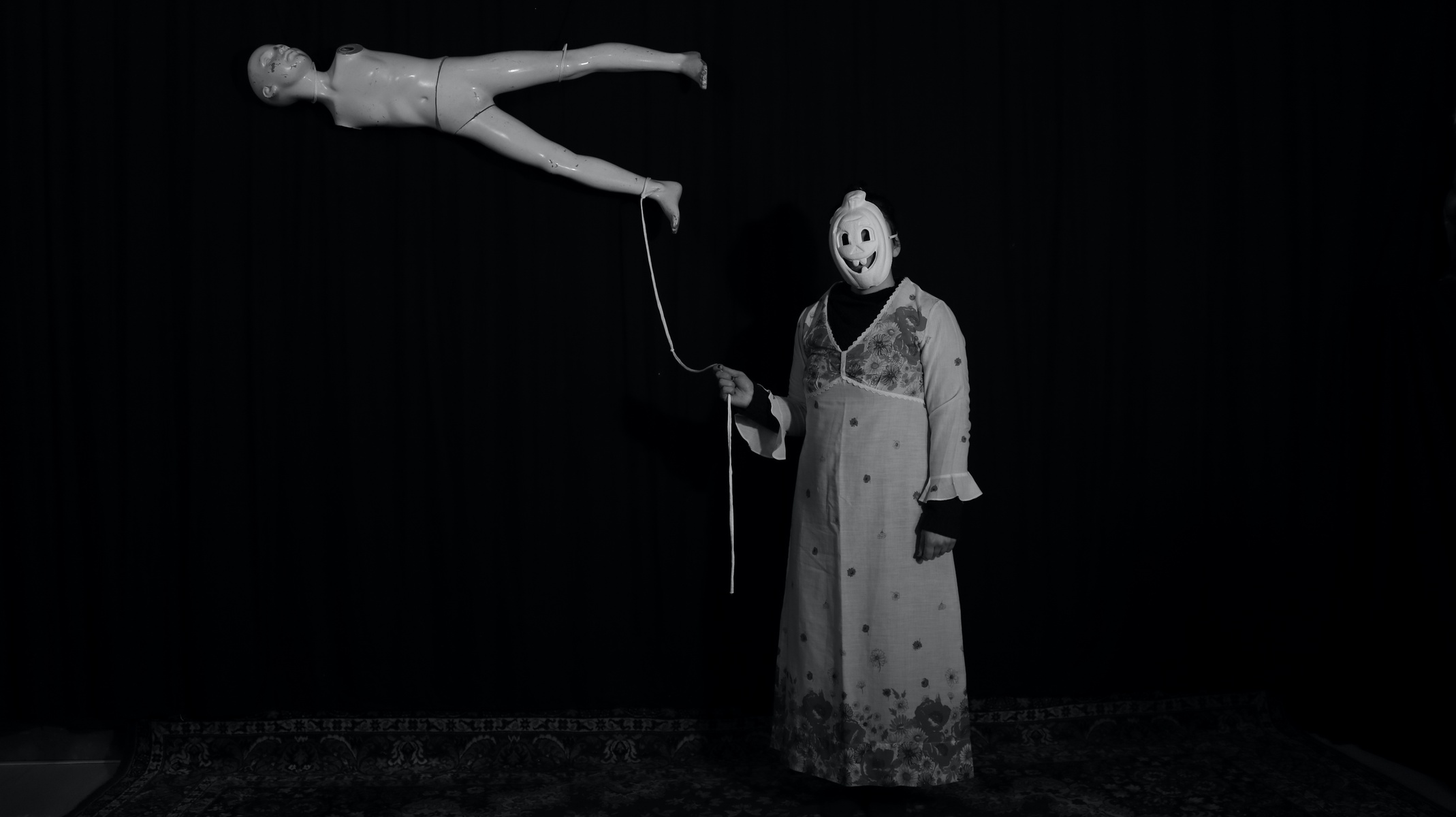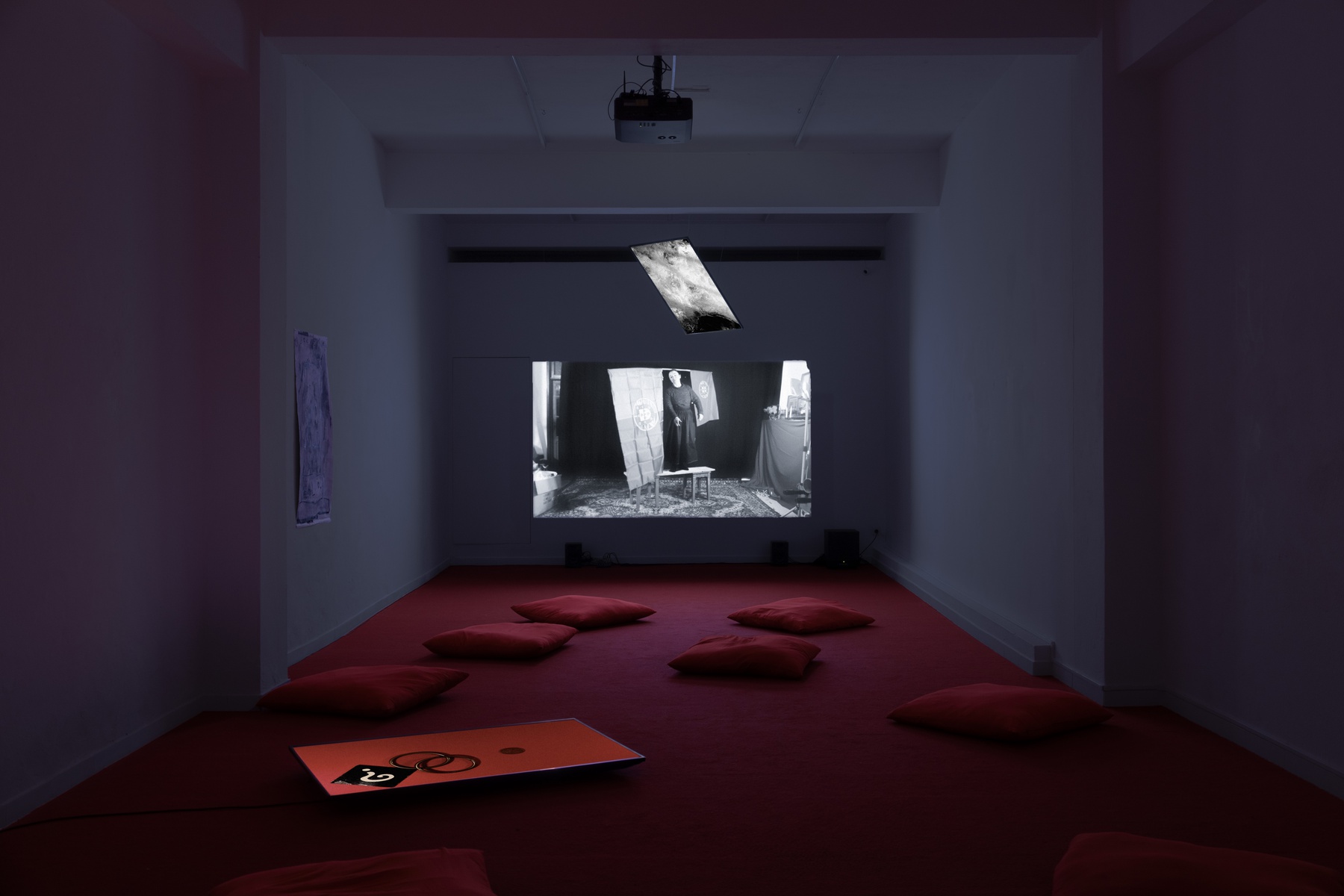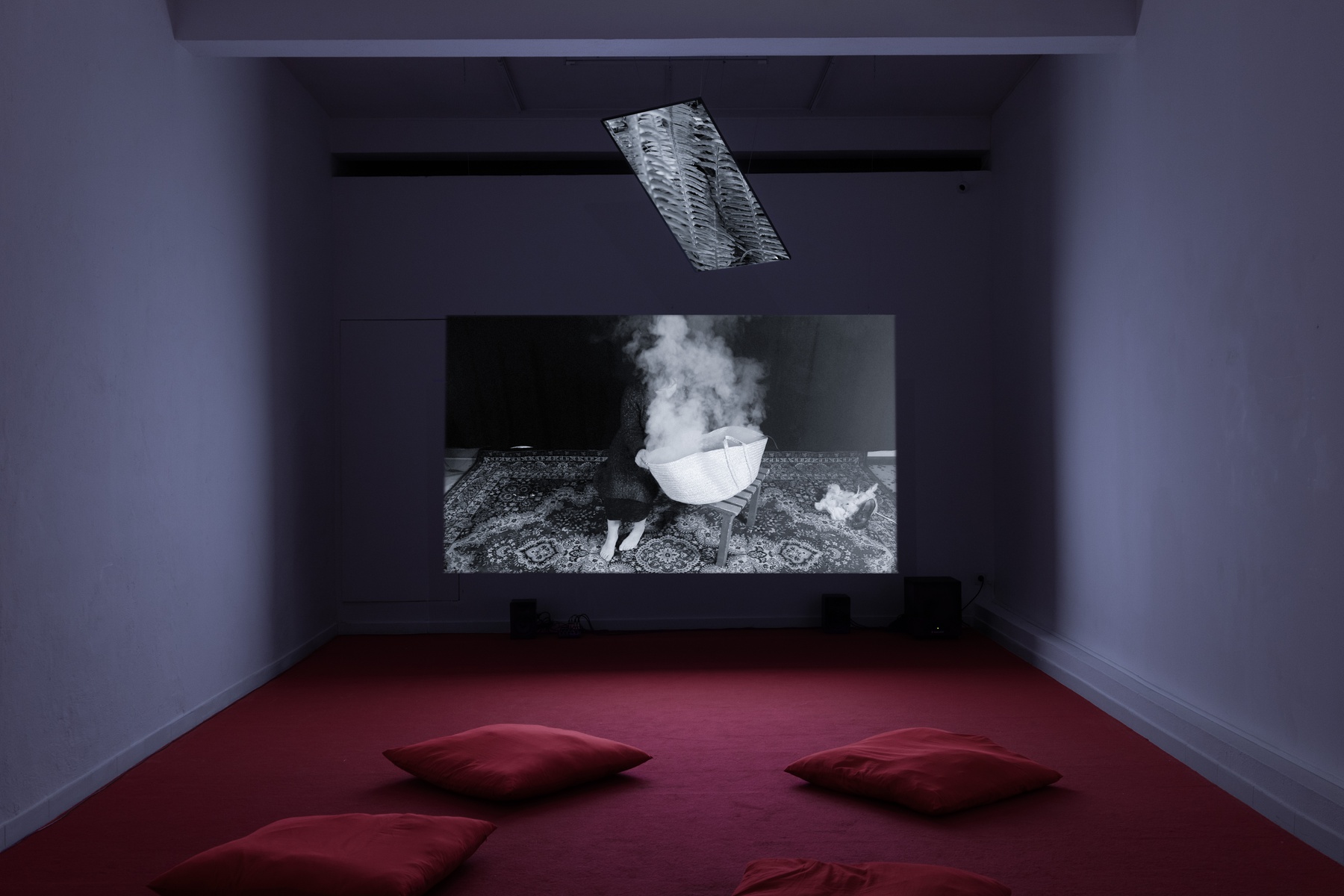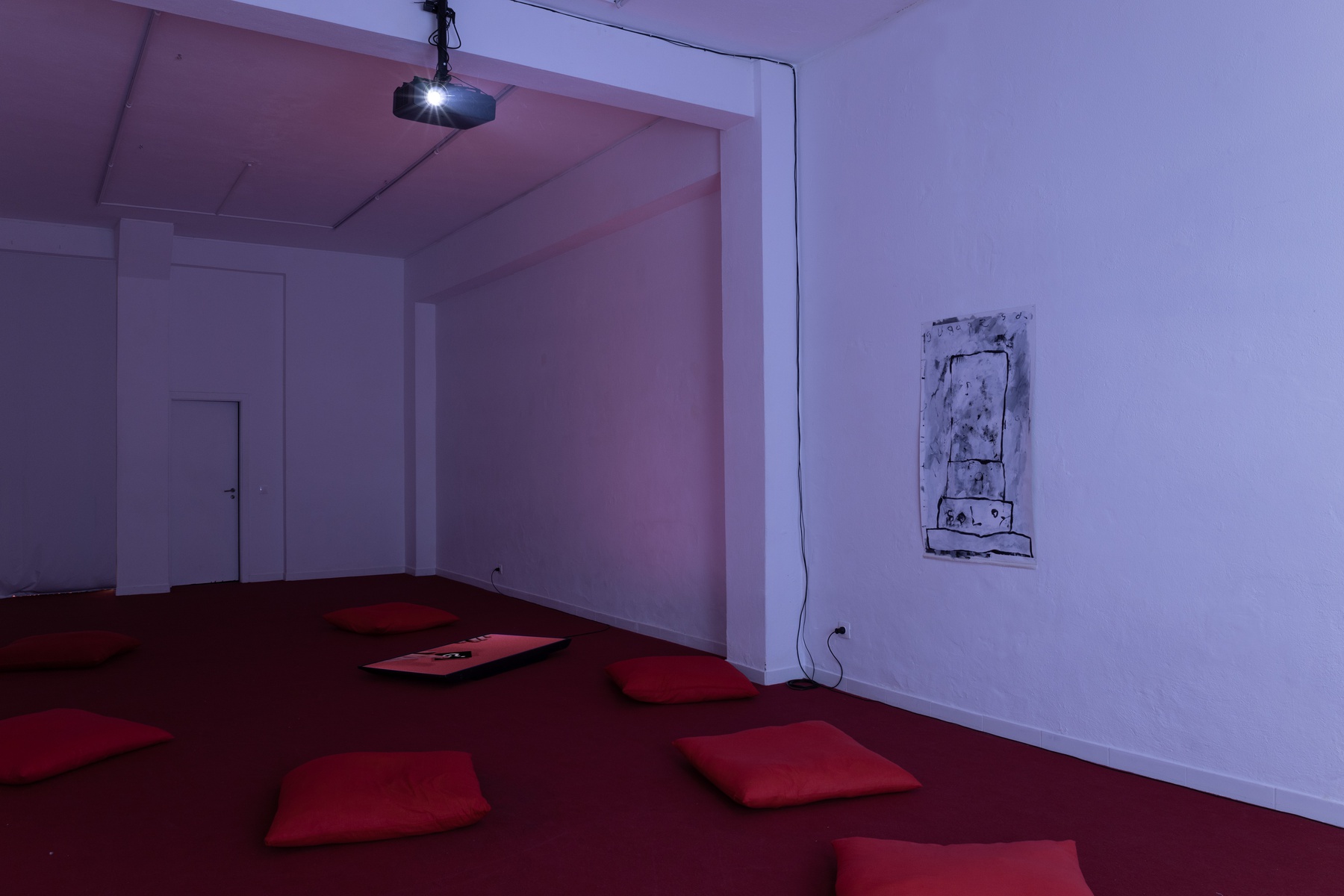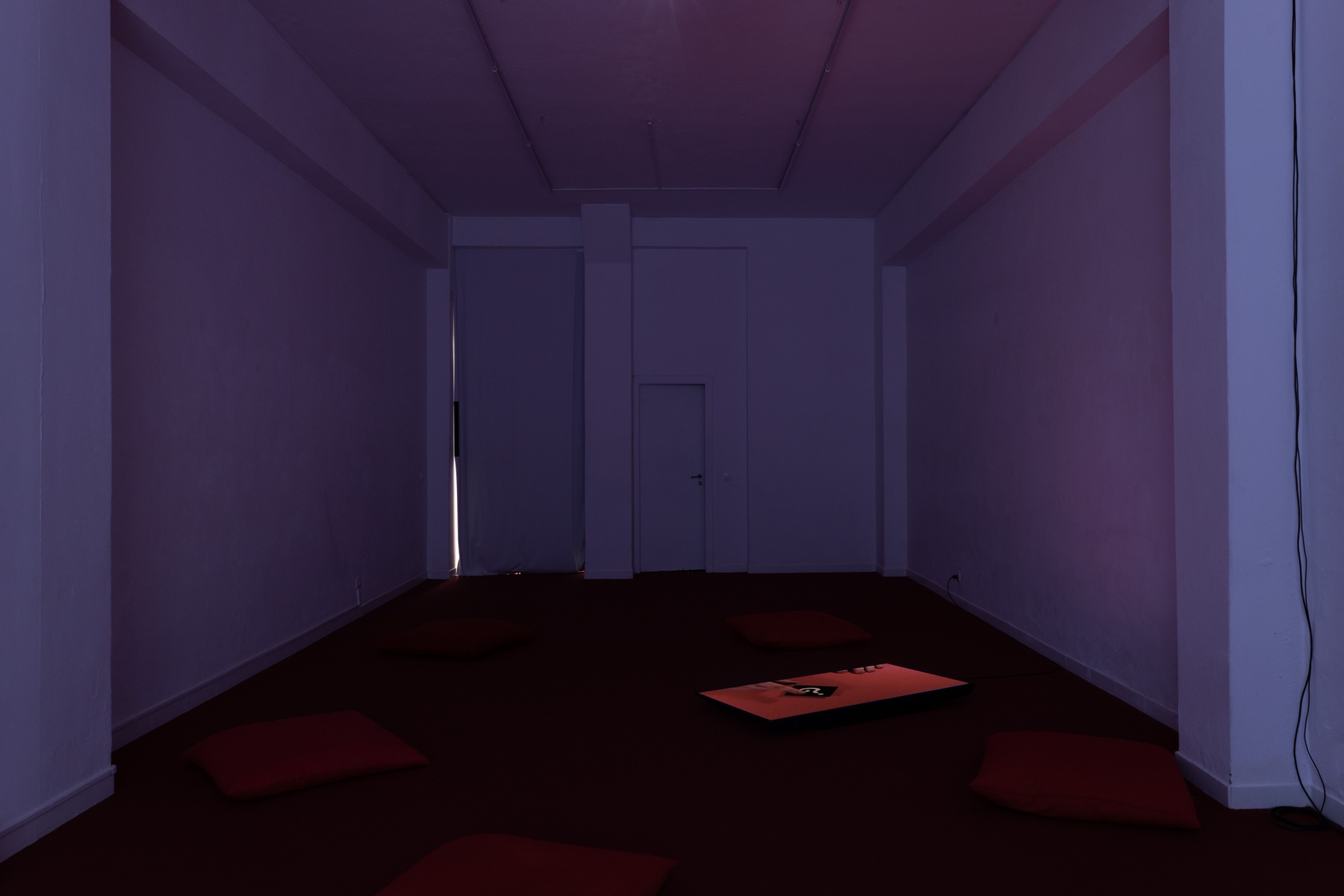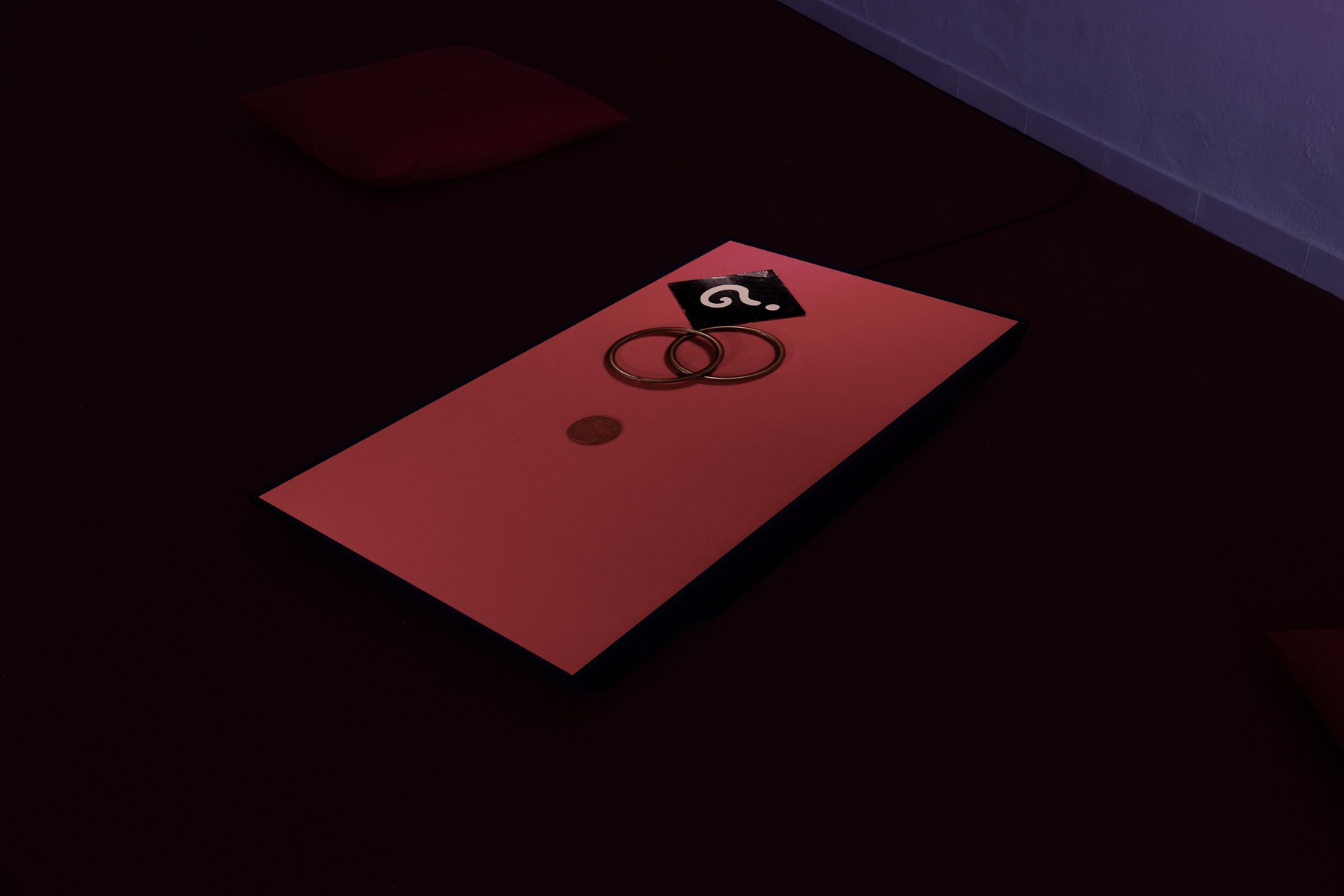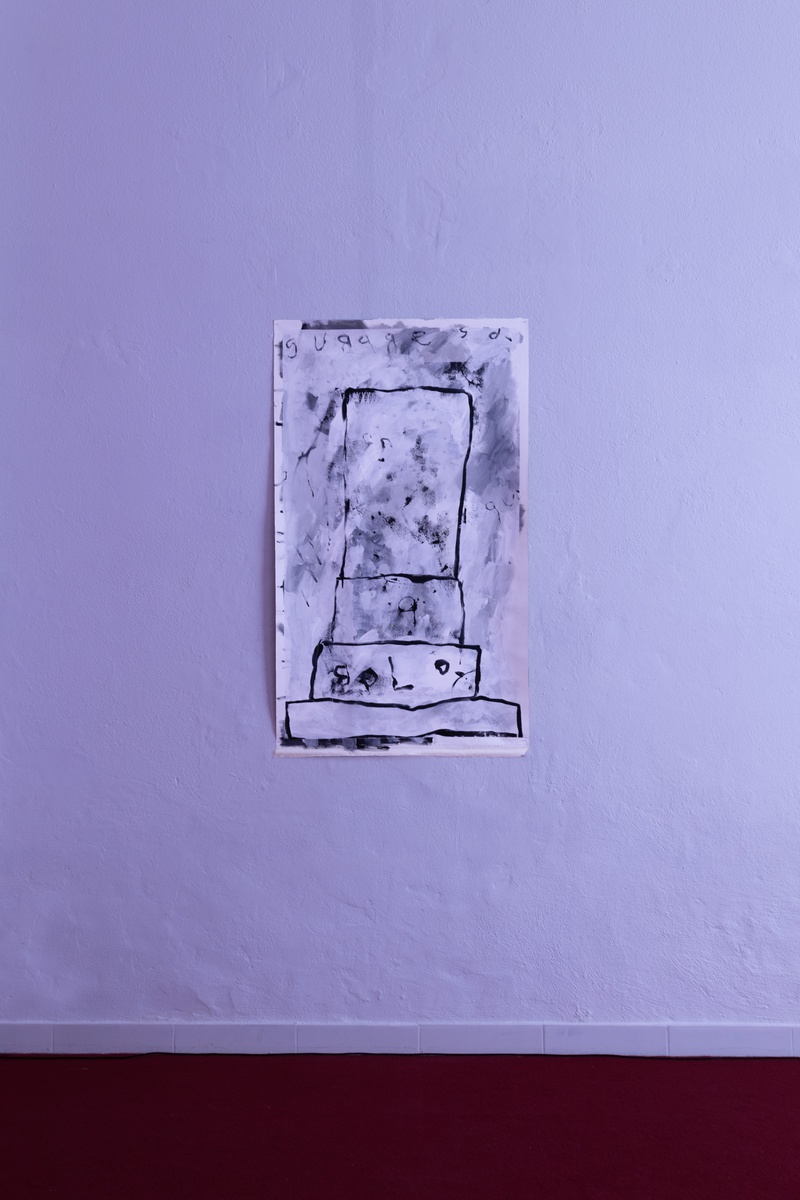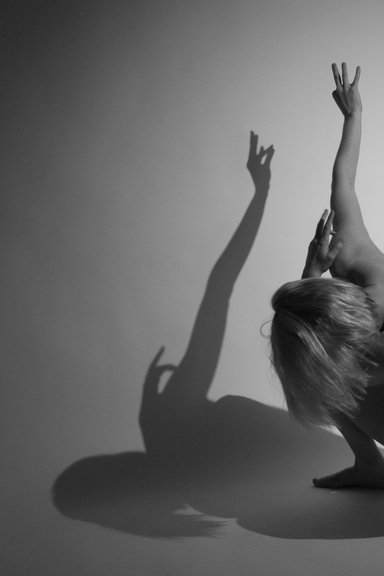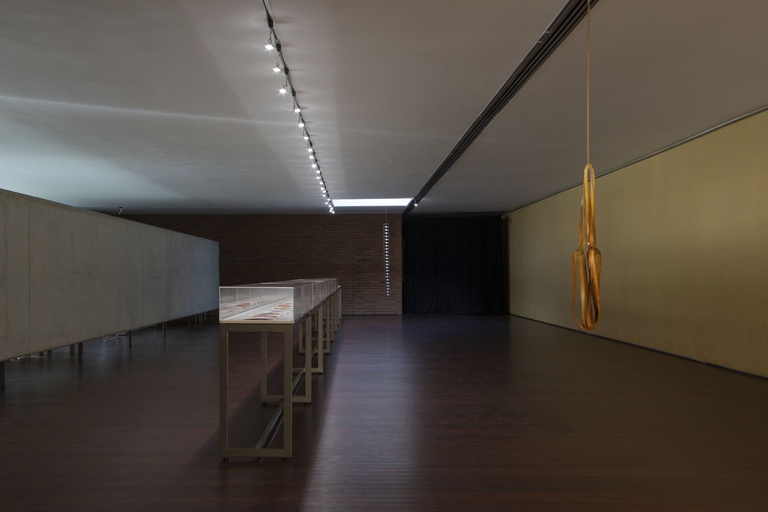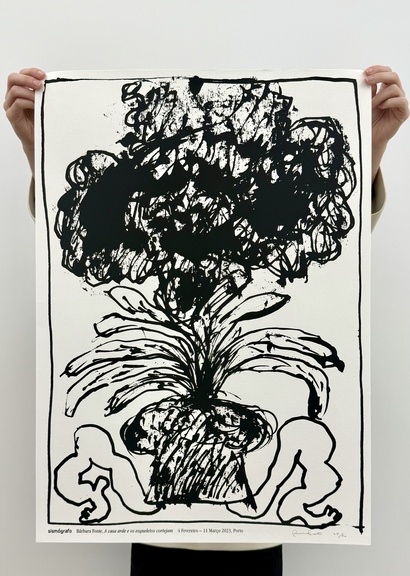The house burns and skeletons woo
Exhibition
4 Feb – 11 Mar 2023
"Bárbara Fonte’s unsettling videos have open, dynamic forms. They produce and subvert meaning. They do not allow to be locked into a temporal continuum. Bárbara Fonte takes fragments from the original context, articulates them, and establishes new relationships. She stands between literature and performance. She shows us a world where what has been neglected, left aside, has been deposited. Bárbara Fonte breaks the shell that covers things.
The atmosphere is that of an old cinematographic comedy. The characters seem to proceed from the sphere of the circus, preserving the last vestiges of the saltimbanco artist. The stage set is ephemeral, full of worn-out, useless, obsolescent things. The movements are clumsy, the gestures disjointed and torn from the continuum.
This exhibition reminds us of a world of clowns, masks, and disguises. Play, mimicry. In a place where children feel safe, the foolishness of the world is shown. The childishness of that which claims to be adult is rejected. Bárbara Fonte’s heroines, with their strange solitary power, find in this worn and sad world a last refuge. They oscillate between kindness and cruelty. In their hopeless effort, they try to absorb destruction, they respond to an oppressive power that consumes their lives, that does not accept their deviation.
Suddenly, we discover that these characters have an archaic aspect. The forces that govern their world, which is also archaic, are the forces of our time, of our world. The archaic operates here as a mirror. Instead of submitting to or glorifying the world, these characters resist it through nonviolence. The only way they found to prevent the world from being right was to prove it right, was to show themselves weak, powerless, incorporating the forces of the enemy. They imitate the world to take off its mask. In this world full of props and lumber, they try to rescue an image of happiness.
In “The house burns and skeletons woo”, Bárbara Fonte presents us a succession of scenes, of episodes. Frozen moments. Remnants of experiences that over time have become hidden. We receive a shock as when we see an old photograph. Associations awaken and disturb contemplation. Bárbara Fonte does not falsify reality with a dream. Rather, she reveals an enigmatic image of reality. She leaves loose elements, in a work marked by the strength of the fragment. From the collision between fragments an unexpected dimension is born. The secret world of these characters overwhelms us. We feel the proximity of things. Materiality hits us, provides a jolt, leaves us full of doubts and uncertainties. When meaning bursts out, it breaks. Each fragment says: “this is how things are” and at the same time: “interpret me”. More than the symbol, allegorical moments are at play. And with allegory comes an endless questioning, an effort of interpretation, the meaning unfolds, it is both obscured and illuminated, and in this it recalls the closed world of the magic lantern.
Best is to take things literally. Sometimes with literalness comes laughter. We must focus on the details, the giant mouth, the braid, the identical ducks, the ghost that looks like an opera singer. In Bárbara Fonte’s tiny theater, in her illusions factory, gestures become revealing. Lost, blunt, enigmatic gestures. Gestures that require an interpretation, an experience that does not repress spontaneity. Only when we dare to imitate Bárbara Fonte’s characters are we able to recognize what the artist has displaced from common sense. We understand her videos when we reproduce the experiences deposited in them, when we attend to the questioning gaze of the characters appearing in them, and, just when we think we understand them, the enigma returns. Understanding comes with what is renewed every moment.
Bárbara Fonte uses the debris from history, puts them into new relationships, creating new worlds. With the waste from a dying society, a new society is born. Bárbara Fonte’s characters carry out a headwind cavalcade, to meet the past, towards the forgotten. They resemble things, the marginalized. Things that in oblivion take on another form. They are deformed like Walter Benjamin's little hunchback. Little hunchback who, always engaged in mischief, moves around in the basement, in this unfinished world, as if it were his home: “When I go up to my kitchen stove / To make a little soup, / I find a little hunchback there / Has cracked my little stoup”. In the forlorn places, in the world of useless things, between the curtains, on the big carpet, the characters that appear in the videos perform little tricks. They throw a party with the dishes. They behave like the wicked witch who shows us the true face of things. They break the magic. They are angels and stars. Everything would be true if it were not tied up with threads. Acrobats, these characters jump, slide, shake their legs and their old dresses, they release from themselves the weight of the world. They float away to the admiration of the ghosts. They are relatives of Josephine the singer, from Kafka's short story, “those who have not heard her sing do not know the power of singing”. Poor means, an almost nothing. Is it really singing? All she has to do is move her head, ajar her mouth, look up and she ravishes, she shines. Where does her power come from? What is the reason for her charm? There is something in her that leads to laughter, but the laughter gets frozen. Josephine renounces false success, false fame. Like Josephine, Bárbara Fonte’s characters are lost in the territory of oblivion. Just like in Josephine, “something of our poor brief childhood lingers in them, something of lost happiness that can never be found again, but also something of active daily life, of its small and unaccountable gaieties”." Emídio Agra
Bárbara Fonte (Braga, 1981) graduated in Painting from the School of Fine Arts, Porto University, and has a postgraduation degree in Theory and Practice of Drawing from the same school, she has taught drawing and visual arts. She has participated with texts and illustrations in several publications. She has carried out residencies in several artistic areas. Her work, involving different media (drawing, photography, performance, and video) is described as an intimate performance exploring the language of symbols (an evocative and omitted place, ancient and manifest, intimate and common). It evokes the relation between femininity, culture, and religion in a very personal perspective in sync with her personal history and empirical attitude, exploring the dialogue between the impulses of the psyche and the instincts of a body-self vis-à-vis the collective consciousness as beings with dogma. She has been exhibiting since 2001 in group and solo exhibitions, among which are the following solo exhibitions: Coreografias do Riso, Casa Museu Abel Salazar, Porto, 2021; Pústula, Galeria A. Molder, Lisboa, 2021; Neste corpo não há poesia, CAAA, Guimarães, 2020; M (de manifesto), Galeria da Universidade do Minho (Museu Nogueira da Silva), Braga, 2018; Fluxo de Intervalos, Câmara Municipal de São João da Madeira (Paços do Concelho), 2016; Reversibilidade, Fundação Júlio Resende (Lugar do Desenho), 2015.
Exhibition
4 Feb – 11 Mar 2023

